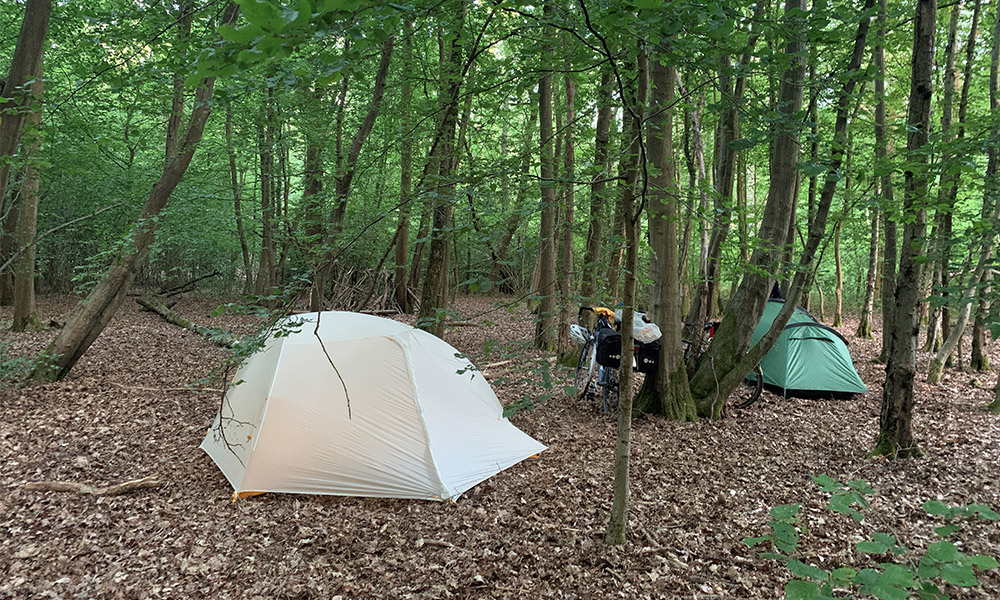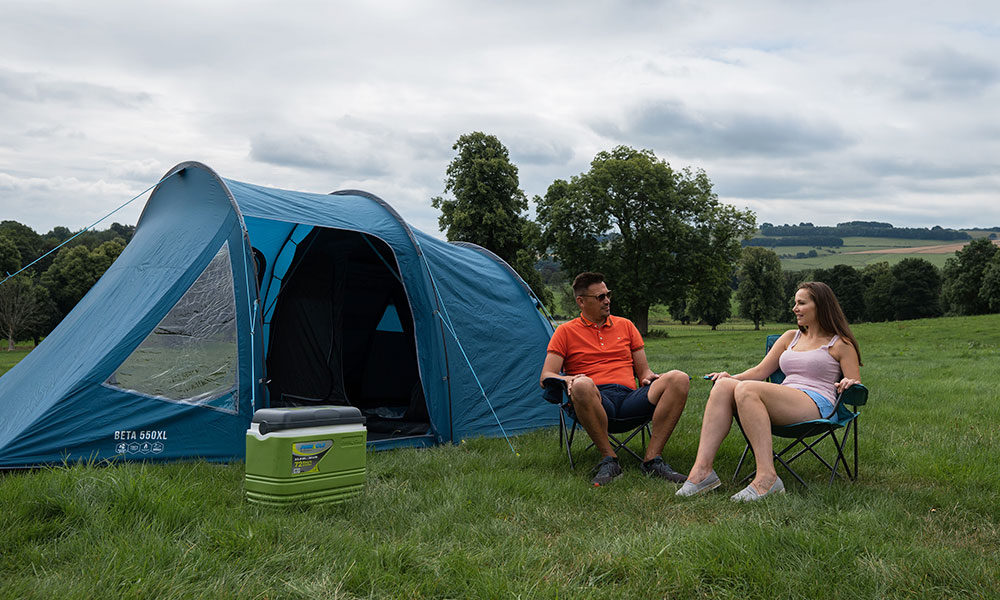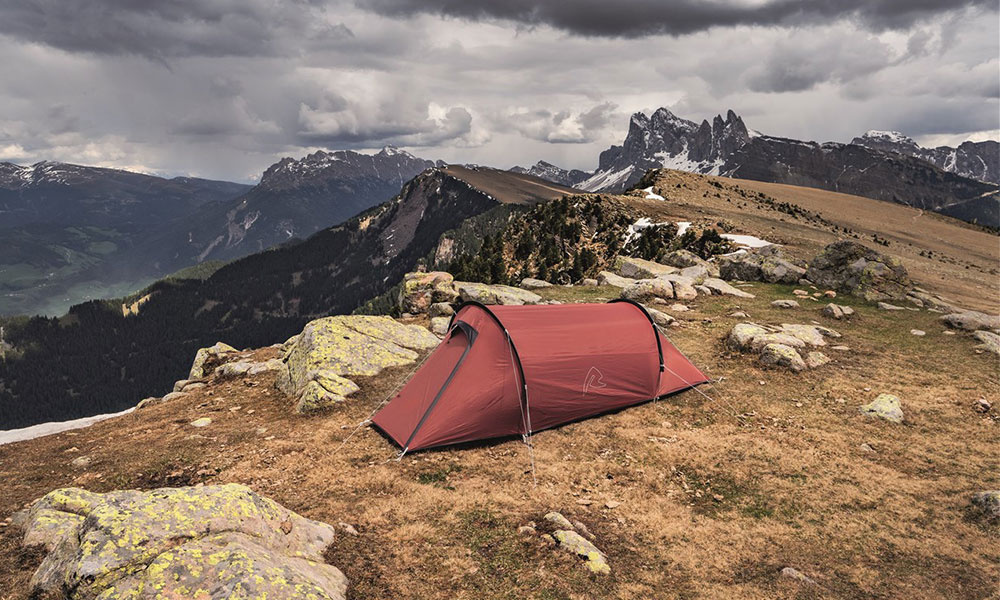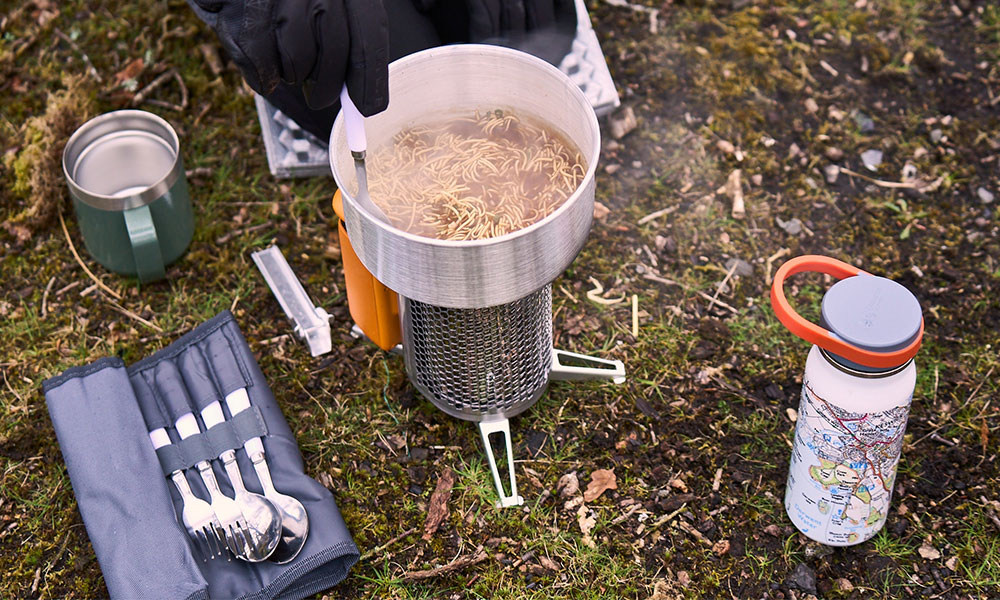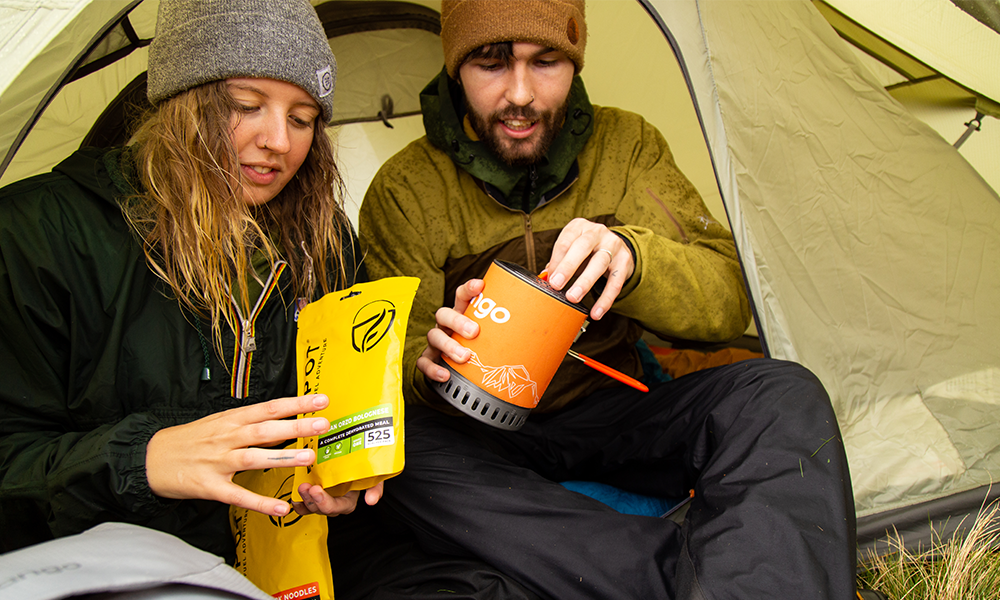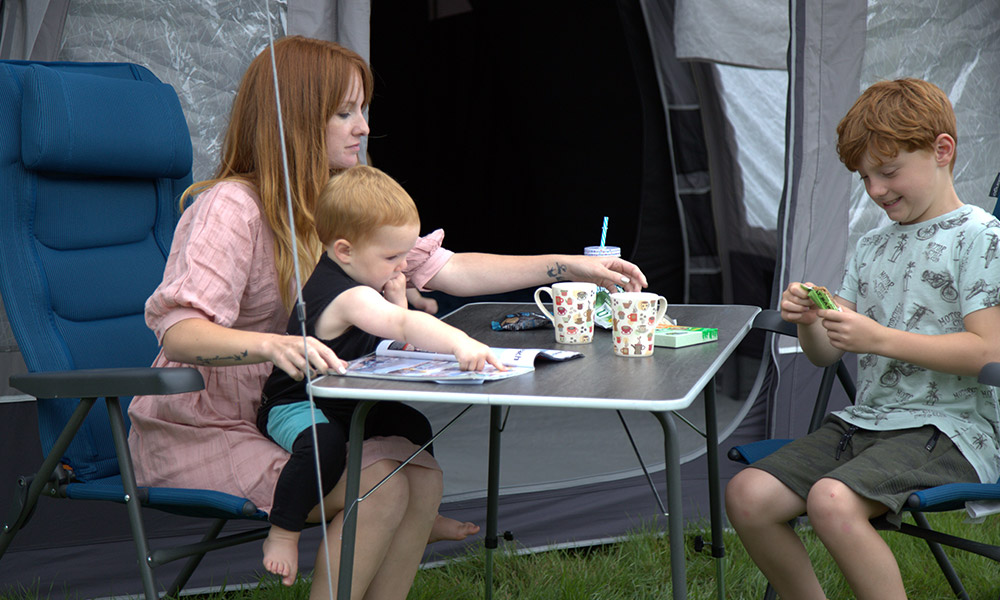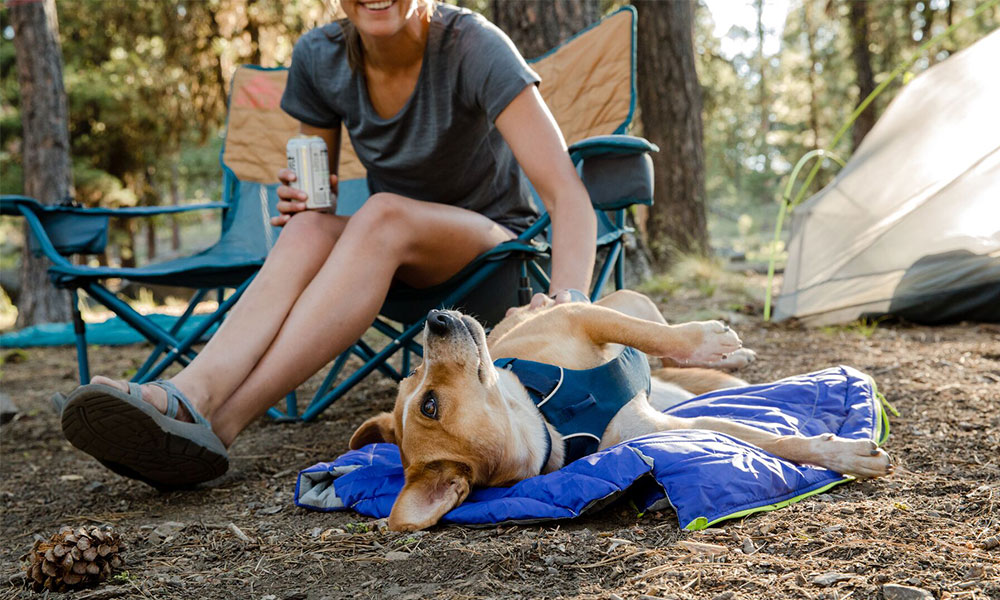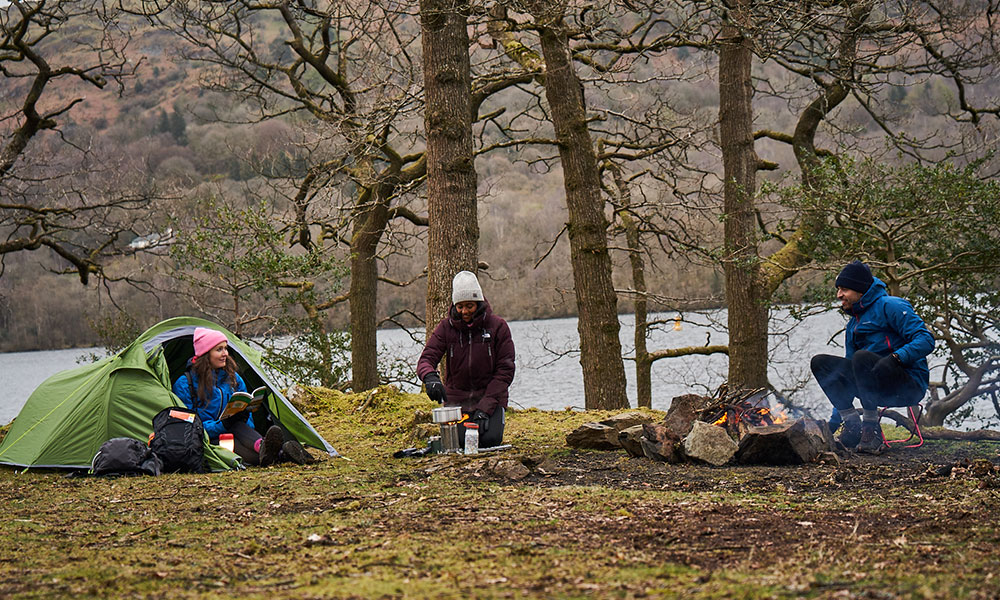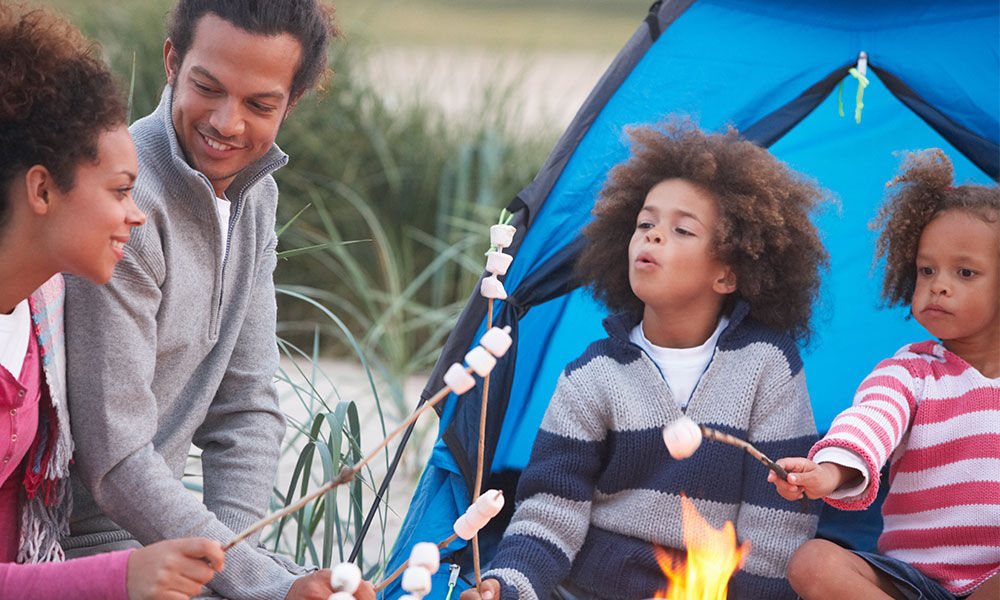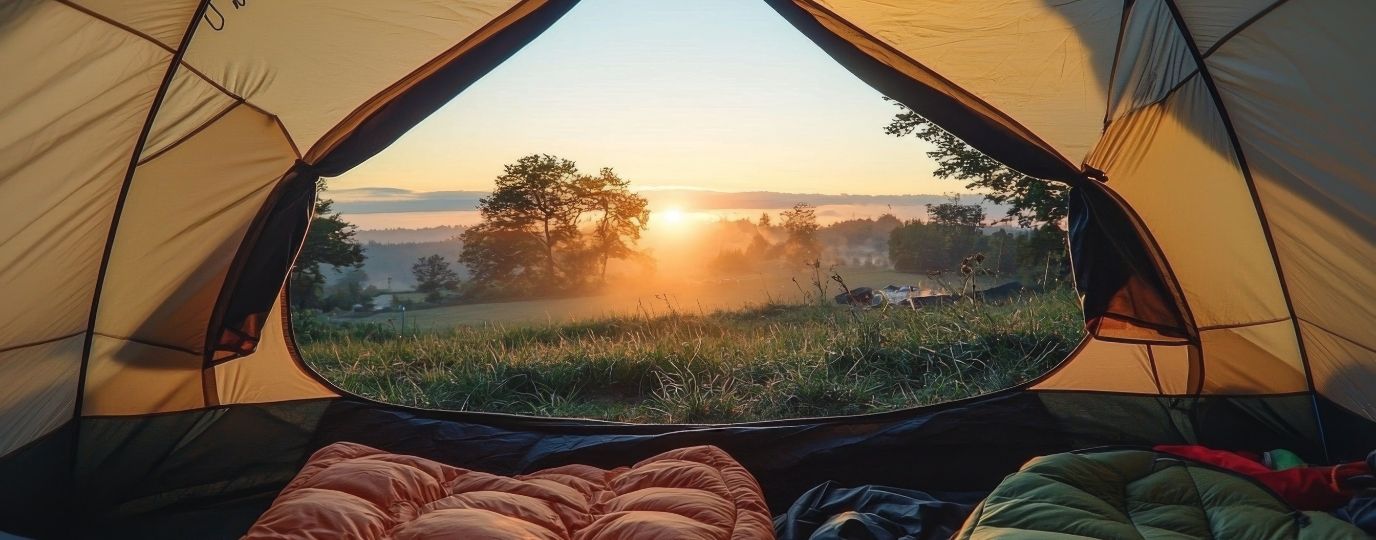How to plan a successful camping trip
Planning your first camping trip? Check out this comprehensive beginners guide for tips on what to take, fun activities to do whilst you’re there and how to cope if it rains.
Camping is an amazing experience and it’s cheap and cheerful too. Whether you’re sleeping under the stars for the first time or hundredth time, it will involve a little preparation, especially if you have kids in tow. Before we look at what to take and what to do when you get there, let’s understand some of the lingo often used by other campers…..
Common camping terms
- Bivouac – a temporary camp during bad weather used by hikers
- DEET – ingredient in many insect repellents
- Embers – firewood that has burned down to a steady glowing heat good for cooking
- Footprint – the square-foot measurement of the bottom of a tent
- Gear loft – a net or flap near the tent ceiling that holds small items
- Grommet – reinforced rings on a tent used for tying it down
- Guy line – cord that reinforces a tent or rain fly
- Kindling – small, dead twigs used to start a fire
- Mummy bag – a sleeping bag that fits closely and conserves body heat
- Poncho – a rain garment with a hood that covers most of the body
- Rain fly – tarp that prevents rain and condensation from entering a tent
- Seam tape – tape that seals tent and equipment seams against water
- Tent stakes – spikes that hold down tent lines
- Tinder – wood shavings, dry grass, or fibres to start kindling burning
- Vestibule – a covered area in front of a tent door
Types of camping
There are two types of camping; one at a campsite and the other out in the wild. If you’re wild camping, everything you need has to be carried and you set up camp without the benefit of a cleared space or electricity and water. Be aware that in many places you are not allowed to wild camp without the land owners permission. Many people do still wild camp and if you’re going to do this, make sure you’re not disturbing anyone or anything and that you leave no trace. It’s also best to set up after dark and be gone by sunrise. Some parts of Dartmoor National Park are an exception and you’re free to wild camp provided you follow some simple rules.
At a campsite, you’ll find a level patch for pitching the tent and usually communal toilets and showers. Many campgrounds have hook-ups for running water and electricity, which can be used for caravans and motorhomes. There are different types of campsites, from those with a café and playground, to those on a farmer’s field with a handful of portaloos. Have a think about your needs; you may feel more comfortable with an array of facilities or you may want to immerse yourself in nature.
Choosing where to camp
First, decide where you want to camp. There are thousands of campsites to choose from and many are in beautiful locations like by the sea or in a woodland. A good place to start looking is the Camping and Caravanning Club website where you can see a large choice of campsites on a map.
Once you’ve narrowed it down, read online reviews about other people’s experiences there, which will also give you an idea of the best time of year to camp at that site. Find out whether there are trails, creeks or other natural attractions to be found at the camp. If you’re planning to bring a pet, make sure it’s allowed.
Camping food
You’ll want to bring a mixture of perishable and non-perishable food on your camping trip. You can plan on eating the food that doesn’t last (like uncooked meat, prepared salads and soft cheese) in the first couple of days. As long as you have a good cooler, you can bring refrigerated foods, especially if you’ll have access to ice to replenish the cooler.
Non-perishable camping food (like tinned tuna, oats and beans) should make up the bulk of the food you take for camping, since it keeps without refrigeration. Pasta, rice and bread will fill you up and it’s not hard to make them into savoury meals with other ingredients.
Some popular camping foods include peanut butter, couscous, bacon, eggs, wraps and cheese.
The snacks and drinks you bring will liven up your choices and keep everyone happy. Oranges, grapes, apples and melons are nutritious between-meal-snacks that stay fresh for a long time. Carrot sticks and celery with peanut butter are snacks you can throw in a backpack if you’re going for a long hike. Hard cheese with crackers is a tasty treat and nuts will always keep well. Make your own trail mix by combining nuts, seeds and dried fruit, so you can be sure it doesn’t have too much salt or sugar.
Most campsites have access to fresh water but if you’re wild camping, you’ll need to bring it with you.
Tips for handling camp food
- Wash your hands frequently when handling any food.
- Store raw meat in a separate cooler.
- Bring fruits and veggies that are at the peak of ripeness but not bruised.
- Keep different types of produce separate to prevent overripening.
- Freeze some foods and beverages before you go to act as extra ice in the cooler.
- Use tupperware containers to store food. This keeps it fresh, away from wildlife and means you only bring as much as you need for the duration of your trip.
Cooking gear
Are you going to cook your own food or will you eat out? Will your chosen campsite have a kitchen or cooking facilities? Are you allowed to light a fire? These are all questions you need to think about before you set off. There’s no better smell to wake up to than bacon sizzling on a camp stove and cooking around your camp is a great experience. For this you’ll need some cooking gear.
Some campsites may have a small kitchen with gas and electric but more than likely, you’ll need to bring a portable camp stove and fuel, especially if you want to dine al fresco next to your tent. Here are the basics to get you started:
- Camp stove
- Fuel for your stove – gas is most popular
- Cooking pots and pans
- Plates and bowls
- Utensils and cutlery
- Mugs, cups and flask
- Coffee maker if you like a good brew
Camping clothes
Depending on the time of year, your clothing will keep you dry and warm or help you stay cool. It also protects against insect bites, scrapes and too much sun. Be prepared for a change in the weather and always have a set of spare (dry) clothes in case it rains. Some campsites have washing machines but more basic campsites won’t. Always pack a warm jacket, even in summer, as nights sitting around the campsite can feel chilly here. Here are some basics to pack for your camping trip, depending on the season.
- Fast drying underwear
- Polyester blend or wool socks – pack more than one pair per day
- Comfortable pyjamas/lounge wear
- Nylon, merino or blend t-shirts/long-sleeved shirts
- Jumpers and a warm jacket
- Shorts/long trousers
- Swim wear
- Hats
- Gloves (summer and winter)
- Trainers
- Hiking shoes
- Flip-flops for the shower and beach/river
- Rain poncho or waterproofs
As you can see from the list above, it’s best to avoid clothing and underwear made of cotton. That’s because it absorbs moisture more easily and stays wet longer. One tip you’ll see in a lot of camping guides is to bring a lot of socks. There may be days when you go through several pairs! For more information on clothing, read our guide to layering.
Tent camping gear
- Tent
- Rope
- Extra stakes
- Footprint tarp for under the tent
- Extra tarps and blankets
- Sleeping mats
- Sleeping bag
- Headtorch and lanterns
- Extra batteries/power bank
- First aid kit
- Sunscreen
- Insect repellent
- Toilet paper
- Walking poles
- Fire kindling (check whether fires are permitted)
- Duct tape
- Heavy duty 30-gallon bin bags
- Sandwich bags
What to do when it rains
This is a situation that reveals the value of the extra tarps you brought. If you have to set up your tent in the rain, tie a rope between two trees and hang a tarp over it, then stake the corners of the tarp or tie them to adjacent trees. This will give you some coverage while you set up. If your tent doesn’t have a vestibule in front of the door, set up a tarp over the door so you’ll have a place to leave your wet clothes and shoes.
You can always play cards and other games or take a relaxing nap while you’re waiting for the rain to stop. If the rain doesn’t seem to be going away, you might decide to go hiking anyway. That’s when the walking poles will come in handy for keeping your balance on the slippery, wet ground. Make sure the rain ponchos and waterproofs you bring have ventilation and are large enough to cover a hiker with a pack.
Fun camp activities
- Walking
- Exploring
- Board and card games
- Outdoor Games
- Storytelling
- Den building
- Cooking over a fire
- Kayaking
- Swimming
- Fishing
How to break camp
Cleaning and packing a tent
Before you pack up your tent, you’ll want to remove and pack up everything inside it. Then sweep up any dirt or leaves that remain on the floor of the tent.
Ideally, a tent should be packed up after it’s had a chance to air out, allowing any moisture to evaporate. Open up the windows and unzip the front door and, while you’re waiting, take a damp sponge and wipe any dirty areas on the outside of the tent.
Once the tent is dry and aired out, collapse it and fold it toward the openings. This will give the air inside a chance to escape, allowing you to roll it up compactly. The tent poles should be used as a spine to snugly roll the canvas tent around.
Make sure the tent has been folded to about the width of the tent poles before you start rolling, and take the time to make sure it’s a tight roll.
Leaving the site clean
Campers should always follow the policy of “leave no trace” when the camping trip is over. It’s also extremely important to completely extinguish your campfire. Here are steps to take that will make sure it doesn’t reignite and cause a forest fire.
- Allow the wood to completely burn out until it’s ashes if you can.
- Keep pouring water on the campfire until all hissing sounds stop.
- If the water’s not available, smother the campfire with dirt or sand, first stirring it into the embers.
- If there are any remaining sticks or logs, scrape them and douse with water or smother with dirt.
- Make sure that the fire is no longer warm before you leave.
Top tips for first time campers
Part of your camping preparation should be to read up on mistakes beginner campers make, so you don’t make them yourself! Here are a few of the most common ones.
- Make sure the ground is level (or as level as can be) before pitching your tent
- Remove any sticks/stones/debris before pitching your tent
- Remember spare batteries for things like lanterns and torches
- Store food in airtight containers and discard of rubbish in campsite bins straight away – you don’t want to attract animals.
- If you have to pack up in the rain, make sure you air and dry your tent as soon as you get home.
Be responsible
Whether you’re pitching up at a camp site or sleeping in the wilderness, it’s important you do you bit to help protect the environment. As the saying goes ‘leave nothing but footprints’. This video from Cycling UK explains how to wild camp responsibily.
Poo like a pro
And finally….. the all important question. If you’re wild camping, what should you do if you need a number two? This video from BMC will give you the answer, so you can do you bit in leaving things just as you found it.
Author Paul Turner is the man behind TakeOutdoors.com where he shares all his knowledge and experiences on camping.


